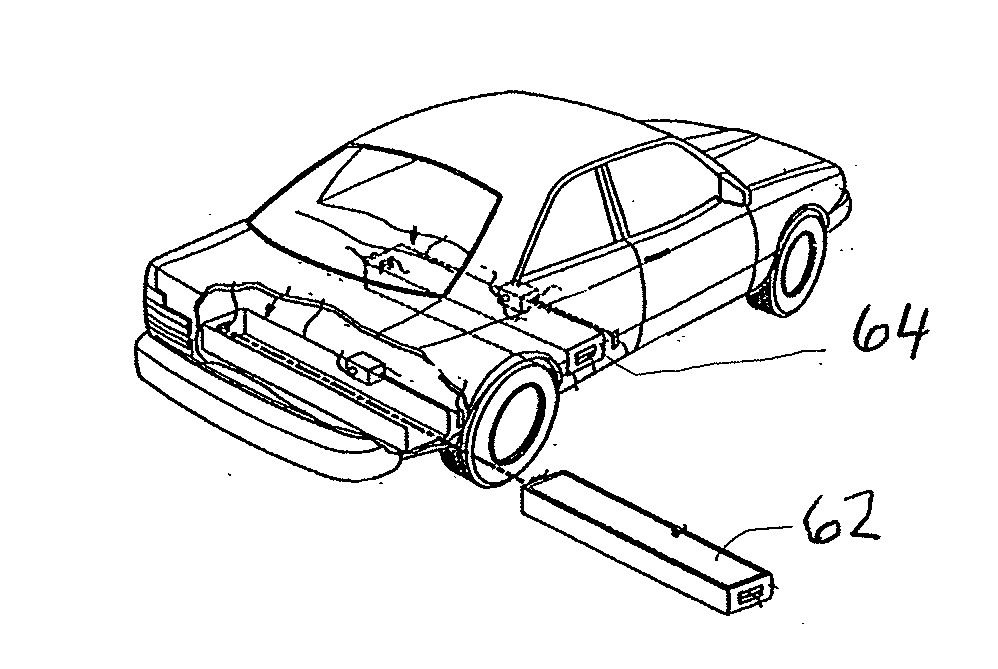Vehicular accessory
a technology for electric vehicles and accessories, applied in the direction of battery/fuel cell control arrangement, battery/cell propulsion, instruments, etc., can solve the problems of reducing the driving range by the same percentage, tesla's quick changing battery station will not provide the answers to the needs of the mass market either, and loses a very substantial portion (about 50%) of their charge holding capacity, etc., to achieve the effect of reducing shortcomings and drawbacks or at least reducing them
- Summary
- Abstract
- Description
- Claims
- Application Information
AI Technical Summary
Benefits of technology
Problems solved by technology
Method used
Image
Examples
Embodiment Construction
[0056]Referring to prior art FIG. 1, the electrical / mechanical system 10 of a BEV comprises a battery system 12, including therein one or more, and typically hundreds of individual batteries or battery cells, that produce a DC voltage of, say, about 100 volts that is provided to a switch bank 13 that connects the battery output to a voltage inverter or converter 14 that produces an output that is suitable to drive motor or motors 15. The motors 15, in turn, drive the wheels 16 of the all-electric vehicle (BEV). As is well known, the motors 15 may be three-phase induction motors, driven by the AC output of the inverter 14, which output has a voltage whose duty cycle or frequency is varied to provide and regulate the electrical power that allows the motors 15 to accelerate / drive the wheels 16, in response to a driver controlled signals from driver interface 17, which reacts to the accelerator pedal or like device in the vehicle. The driver-controlled signals are provided to the CPU 19...
PUM
 Login to View More
Login to View More Abstract
Description
Claims
Application Information
 Login to View More
Login to View More - R&D
- Intellectual Property
- Life Sciences
- Materials
- Tech Scout
- Unparalleled Data Quality
- Higher Quality Content
- 60% Fewer Hallucinations
Browse by: Latest US Patents, China's latest patents, Technical Efficacy Thesaurus, Application Domain, Technology Topic, Popular Technical Reports.
© 2025 PatSnap. All rights reserved.Legal|Privacy policy|Modern Slavery Act Transparency Statement|Sitemap|About US| Contact US: help@patsnap.com



